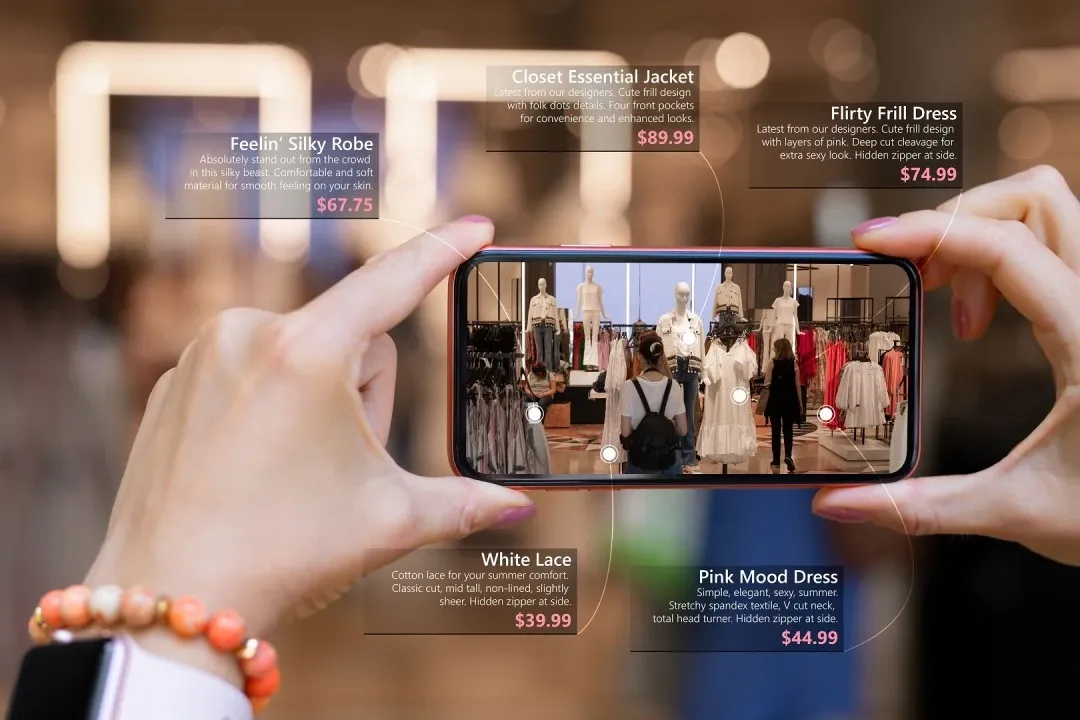Transforming Retail with Computer Vision Powered Personalization

Table of Contents
- Introduction
- Why Computer Vision?
- Building the Model
- Integration and Deployment
- Challenges
- The Future
- Conclusion
- Frequently Asked Questions
Introduction
Assume you are a retailer and your clients are dissatisfied with your service because you do not provide personalized interactions.
Yes, it is true.
71% of people expect companies to provide personalize experiences. And 76% are irritated when this does not happen.
Personalization increases performance and improves client outcomes.
According to a survey, faster-growing organizations generate 40% more money from personalization than their slower-growing competitors.
In the last 18 months, over 75% of customers experimented with a new buying behavior, and more than 80% want to continue doing so.
According to some audits, achieving top-quartile personalization performance across US businesses would produce more than $1 trillion in value.
Consider a scenario in which you are receiving personalized recommendations.
This might be a retail revolution that unlocks the power of Artificial Intelligence (AI)
Let's take a closer look at how we AI and computer vision based technologies help retails to create a personalization.
Why Computer Vision?

- Cameras monitor your movements while you explore, look at, and take up products.
- They monitor what you look at, how long you stay, and even tiny body language clues.
- Advanced computers assess this visual data, learning about your tastes and predicting what will capture your eye.
- Consider it a super-powered shopper sidekick understanding your unsaid desires.
- Based on your own "visual language," shelves light up with suggestions that are exactly tailored to your preferences.
- It's like having a personalized shopping experience tailored to you.
Benefits for Retailers
- When customers see exactly what they want, they're more likely to buy.
- Personalized recommendations are like enticing sales whispers, resulting in satisfied customers and bursting wallets.
- No more shotgun blasts of unoriginal advertisements.
- CV precisely targets the proper audience, increasing your marketing ROI and reducing waste.
Building the Model
1.Data Collection
- Install strategically placed cameras to monitor customer behavior in aisles and near merchandise.
- Ensure that your photographs and videos are of high quality, with enough lighting and resolution.
- Integrate visual data with existing information such as purchase history, demographics, loyalty program data, and product metadata to improve insights.
- To follow ethical norms and protect consumer privacy, sensitive information should be anonymized and explicit consent obtained where necessary.
2.Data Annotation
Assign descriptive labels to photos and videos by identifying:
- Products interacted with (touched, picked up, and analyzed).
- Customer gaze patterns (items examined, time spent watching)
- Body language indicators (facial expressions, motions that show interest or disinterest).
Use specialized annotation software or platforms to streamline and maintain consistency. Either a manual process or specialist annotation tools like Labellerr can be used for this.
Our easy-to-use platform helps you label customer data like product interactions and gaze patterns for top-notch AI models. Try Labellerr free today
3.Model Selection
A few suggested neural networks for personalize shopping experiences are CNN, RNN, RL, and multi-modal models.
These models are image recognition experts who can readily interpret client gaze and interactions, recognize movement patterns, and predict future actions.
Each shines, but they demand resources and extensive training.
4.Model Training
- Train the chosen model on the annotated dataset to discover patterns and connections between visual cues and consumer preferences.
- Use GPUs or cloud-based solutions to do computationally expensive training activities.
- Optimize performance by fine-tuning model architecture and training parameters.
5.Model Optimization
- Using approaches such as regularization and data augmentation, models can avoid memorizing training data and failing to generalize to new contexts.
- Enhance model performance through - Collecting more diversified data, Experimenting with diverse architectures, Adjusting hyper parameters, Implementing domain adaptation techniques.
6.Evaluation and refinement
- Use metrics like as precision, recall, and F1-score to assess recommendation accuracy and client satisfaction.
- Collect qualitative input from consumers to help discover areas for development.
- To keep models relevant and effective, they should be updated and refined on a regular basis depending on new data, feedback, and changing trends.
Integration and Deployment

It's time to bridge the gap between models and reality.
- Select your platform (cloud or on-premise, real-time or batch processing) and ensure seamless interaction with existing systems.
- Test thoroughly, package your model for efficient deployment, and progressively roll it out, getting useful input at each stage.
- Remember that security is paramount, so keep customer information under lock and key.
- Don't forget about the user experience; make recommendations easy to grasp and give customers control.
Challenges
- Training and implementing CV models can be expensive, particularly for real-time suggestions.
- Choosing the correct hardware and infrastructure is critical for achieving efficient performance and cost-effectiveness.
- Integration with existing point-of-sale, CRM, and retail systems is critical for efficient operation and data transmission.
- Consumers may be cautious to accept personalized recommendations based on their visual behavior.
- Addressing privacy concerns, enabling control over data usage, and making genuinely useful suggestions are critical to user adoption.
The Future
- Consider cameras proposing complementing clothes or whole looks based on what you're trying on.
- It's like having a fashion fairy godmother whisper sartorial advice into your ear.
- Products respond to your touch or sight, providing personalize information, pricing, or even augmented reality experiences.
- The grocery aisle becomes a playground for discovery.
- Rewards are targeted to your individual choices, rather than generic points or discounts.
- Imagine your store instantly selecting birthday gifts for you.
Conclusion
CV-powered suggestions promise retail heaven, but the way is paved with data privacy concerns, model biases, and technological challenges.
Retailers may overcome these problems by focusing on ethics, embracing adaptation, and seamlessly integrating.
Remember, this is a journey, not a destination.
So embrace evolution, handle concerns head on, and watch your own kingdom grow!
Frequently Asked Questions
Q1.How artificial intelligence is transforming customer experience?
AI employs machine learning algorithms to examine clients' previous behaviors, interests, and preferences. It can detect patterns, such as product choice or purchasing behavior, and utilize that data to recommend items or services.
Q2.What use cases are there for generative AI in retail?
Generative AI help merchants manage their supply chains and optimize their inventories. It forecasts demand patterns using previous sales data, market trends, and external factors. With this foresight, traders can proactively optimize inventory levels.

Simplify Your Data Annotation Workflow With Proven Strategies
.png)


